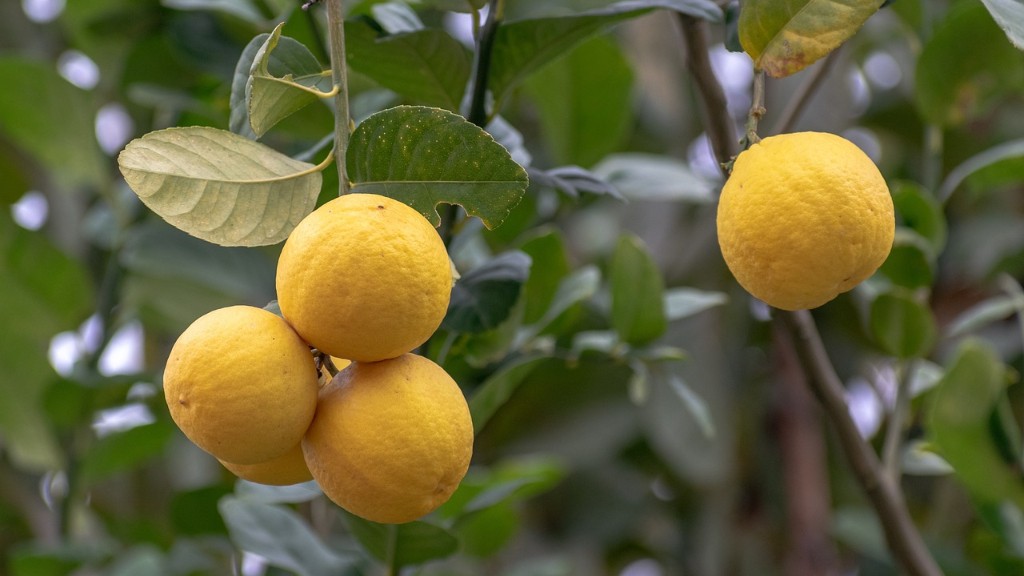Epsom salt is an efficient and cost-effective way to supply essential nutrients to lemon trees. Though there is no definitive answer as to exactly how much epsom salt to use for lemon trees, there are some helpful guidelines for ensuring your lemon tree receives the optimal amount. To begin, it’s important to understand the importance of epsom salt for lemon tree health and growth.
Epsom salt provides two essential micronutrients to plants, magnesium and sulfur. Magnesium helps the plant absorb nutrients, while sulfur helps create proteins needed for healthy branches and leaves. These two compounds are lacking in much of the soil naturally found in home gardens, hence Epsom salt helps keep up with what nature can’t provide. In addition to supporting trees’ health, epsom salt also helps maintain a balance of pH in the soil and encourages insects to stay away.
Before beginning any fertilization treatment, it is always a good idea to consult the specific Soil Test Results for your plant. Knowing the levels of micronutrients already found in the soil will help you accurately assess just how much epsom salt is needed. Generally, though, the recommended dosage for a lemon tree is between 3-4 tablespoons of epsom salt per cubic foot of soil for healthy growth. Any more than that may have a damaging effect. It’s also best to apply the epsom salt in granular form as it provides more efficient absorption.
The easiest way to fertilize a lemon tree with epsom salt is to scatter it on the soil around the base of the tree and then water it in deeply. It’s best to do this every two months or so during the warmer months of the growing season when the tree is most active. If you’re unsure how much epsom salt to use, it’s recommended to start with a smaller dose and then gradually increase it if needed.
Another way to administer epsom salt to a lemon tree is through watering. Fill a watering can or bucket with water and add a tablespoon of epsom salt to the water. Stir it to make sure the salt dissolves, and then water the lemon tree with the mixture. Be sure to water the tree deeply so that the epsom salt will be able to sink down to the roots.
A fertilization program should take into consideration a lemon tree’s age, soil conditions and fertilizer needs. Make sure to keep careful records of how much Epsom salt you’ve applied and what the results were. This will help you determine if and when you need to apply more. Additionally, regular maintenance such as pruning, mulching and watering can all help keep the tree healthy and beautiful.
Types of Epsom Salt
When deciding how much Epsom salt to use for lemon trees, it’s important to choose the right type of salt. Epsom salt is available in a variety of forms, including granular, liquid concentrate, and pellet form. Granular epsom salt tends to be the most cost-effective option and is best for surface application. Liquid concentrate can also be applied directly to the soil or dissolving it in water for foliar spraying. Pellet forms are best suited for use in hydroponics systems and soil.
Frequency of Application
When deciding how often to fertilize a lemon tree with epsom salt, it’s important to take into account factors such as age and soil conditions, as well as climate and other environmental conditions. Generally speaking, it’s recommended to apply epsom salt twice during the growing season–once in the spring and once in the summer. However, the frequency may vary depending on the individual tree’s needs. It’s best to consult a professional for more specific recommendations.
Expected Results
When applied in the correct dosages, epsom salt can improve the health of a lemon tree by improving its nutrient uptake and promoting greater overall health. Epsom salt helps break up compacted soil, promotes lush growth and encourages new blooms. The effects are often visible within a few weeks, with the tree bearing large, juicy fruits in the case of a lemon tree.
Precautions
When to decide how much epsom salt to use for lemon trees, it’s important to use caution to ensure the tree’s health is not compromised. Too much epsom salt can cause a tree to become desiccated and ill, while too little will not provide the necessary benefits. In addition, it’s important to note that epsom salt should not be used as a substitute for other essential nutrients.
Organic vs Synthetic Epsom Salt
When determining the amount of epsom salt to use for lemon trees, it’s important to consider the source and quality of the salt. Synthetic epsom salt has a higher concentration of magnesium and sulfur than organic epsom salt, so you may need to adjust the dosage accordingly. However, it still contains trace minerals and other organic materials, so organic epsom salt can be a viable option.
Plants to Avoid When Using Epsom Salt
Another factor to consider when deciding how much epsom salt to use for lemon trees is proximity to other plants or trees. Too much epsom salt can damage certain species, such as tomatoes, peppers, potatoes, and eggplants. Therefore, it’s important to keep Epsom salt away from these more sensitive plants.



